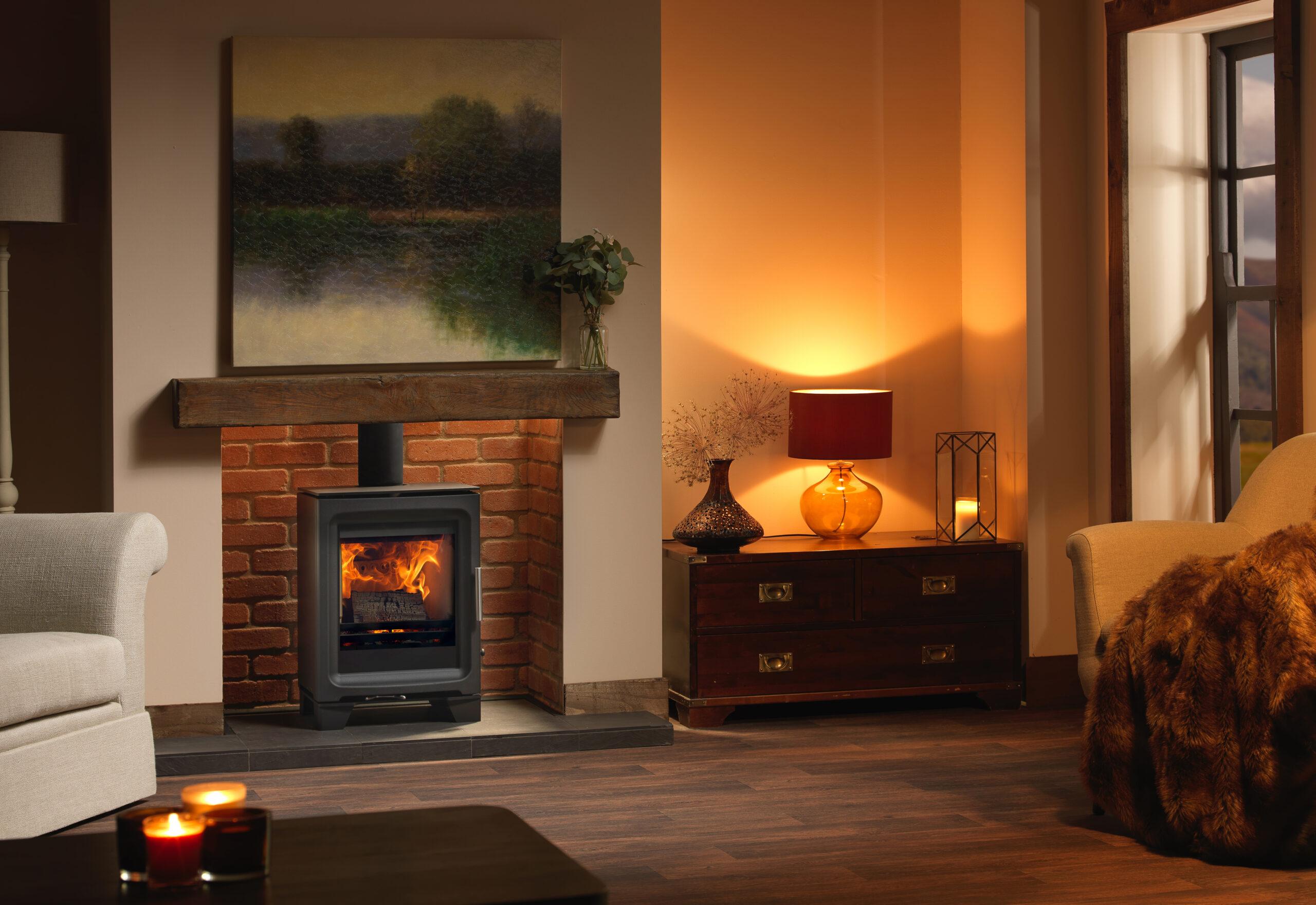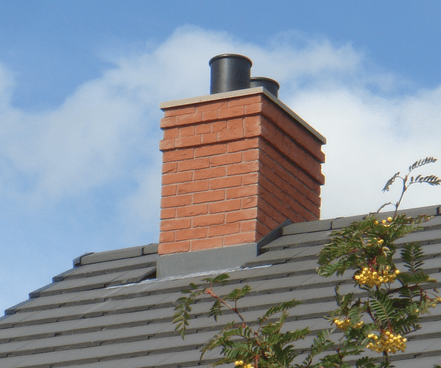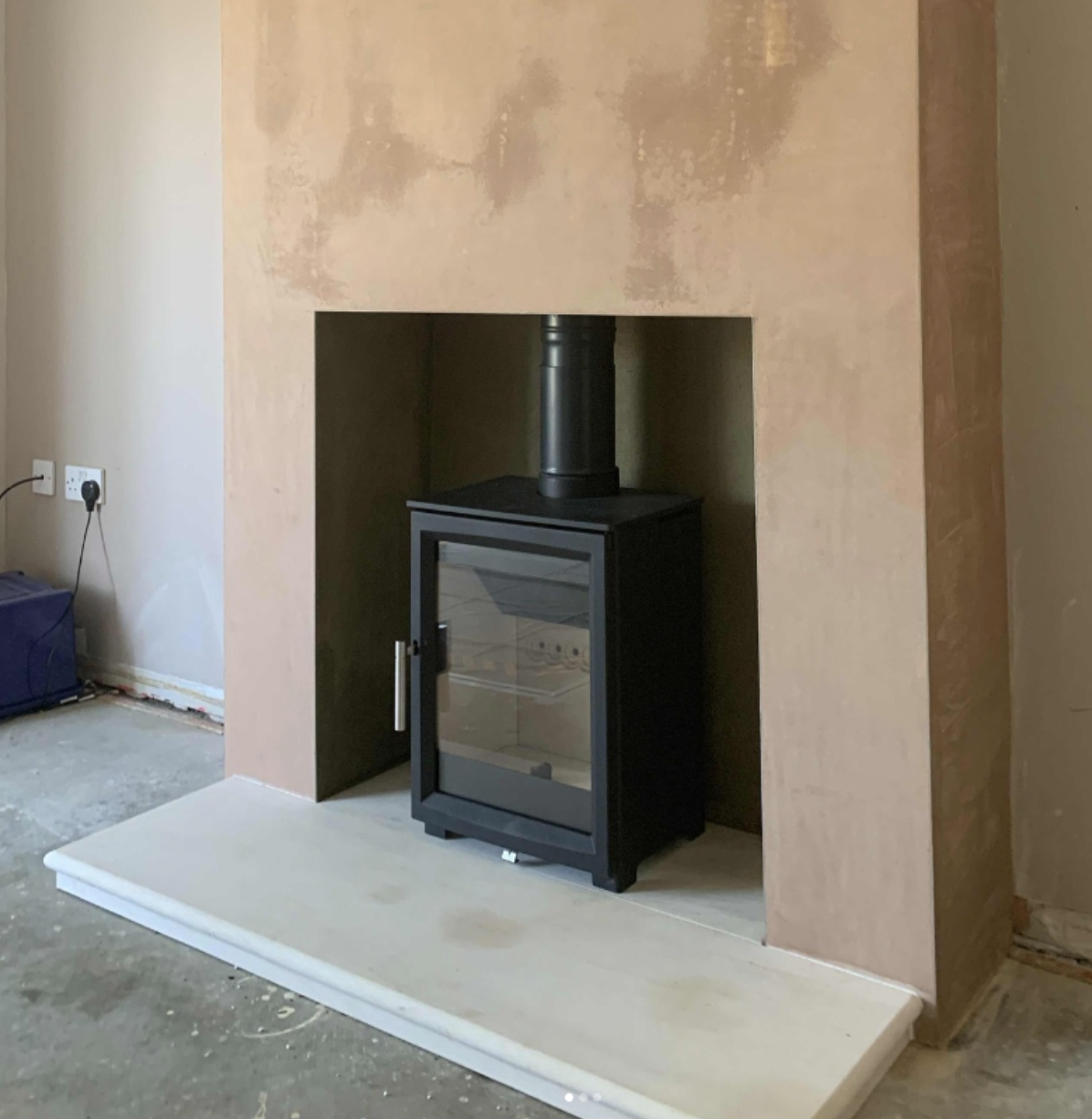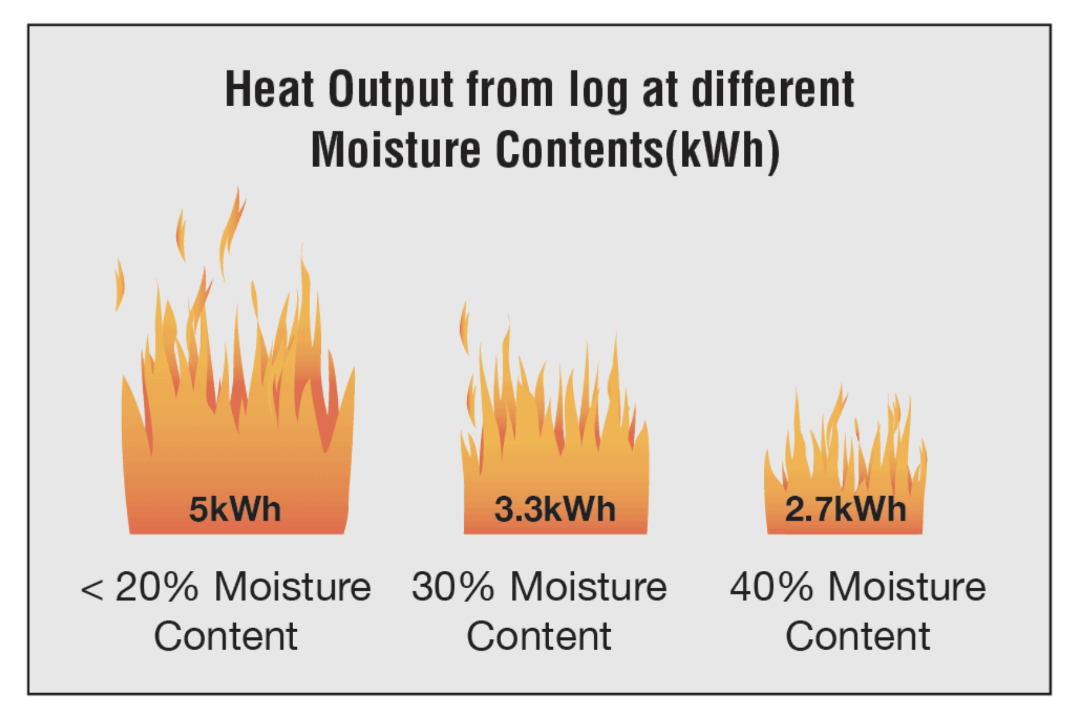We often receive questions from curious potential (and current) customers about wood-burning stoves, the law and regulations, and other topics.
We have listened to you and have compiled a list of popular wood-burning stove FAQs.
Should you have any further questions, please contact us.

Stove FAQ 1 – What size stove do I need?
Stove output is based on the size of the room to be heated and how well-insulated your home is. During a survey, your stove showroom will be able to advise on this. A local HETAS-registered installer will also be able to perform the required calculations for this. It’s important that you get the right size, as too small will not heat the room enough, and too large will make things very uncomfortable.
Stove FAQ 2 – I have an existing wooden beam on my fireplace – is this ok to use with a new stove?
Most of the time, this is fine, but check with the store where you buy your stove. Stoves from Charlton & Jenrick are designed to reduce heat transfer from the stove by using a double skin. The purpose of this is to allow a stove to be used in places where existing features may wish to be kept without fear of heat damage.
Stove FAQ 3 – In the UK , who approves stoves, and the installation of them?
HETAS (Heating Equipment Testing and Approvals Scheme) is the only organisation that approves biomass and solid fuel heating appliances, including wood-burning stoves. It is also the body that certifies installers.
Stove FAQ 4 – What property can/can’t have a stove?
Most properties are able to have a stove. One of the more pressing issues is the available internal space. If you don’t have a chimney, this is usually not an issue, as a flue can be fitted when the stove is installed. When you have an initial survey, you will then be able to find out for sure if you can have a stove, and also the locations where a stove could be fitted in your home. If you can’t have a stove but love the look, there are always gas or electric stoves available.
Stove FAQ 5 – What is the best flue to use in my chimney?
Rebuilding or relining your chimney requires specialist advice. You can discuss your options with a HETAS-registered installer. If you are considering a total chimney rebuild, a builder will be required, and planning permission may also be required. There is a wide selection of ready-made chimney relining systems available, which would be a lot less work and cost less than a total chimney rebuild. Fire-resistant precast concrete, clay and pumice flue liners or ceramic liners provide the best long-term solution, as long as the current chimney openings are large enough to take the correct size flue to suit your appliance. If your chimney is unable to accept some of the liners mentioned above, then double-skin flexible stainless steel flue liners can be an option; these can also be ideal if access to the chimney is difficult.

Stove FAQ 6 – Could I install the stove myself?
Unless you are suitably trained, you should never attempt to install a stove yourself. We strongly recommend the installation be completed by a HETAS-registered installer. This helps ensure the installation is safe and complies with the relevant Building Regulations and Standards. When you move home, a certificate of compliance will be needed. It’s not worth cutting corners here.
If you plan to fit yourself, you need to notify any solid fuel installation in England and Wales to the relevant Local Authority Building Control either via a Competent Person Scheme such as HETAS or directly to the council.
An application needs to be made to your Local Authority Building Control before the installation if you plan to carry out the work yourself or if the person installing it is not registered with a Competent Person Scheme that covers the installation of solid fuel appliances. A HETAS Registered Installer can only notify work they have carried out themselves.

Stove FAQ 7 – When should I have my chimney swept?
HETAS recommends that you should have your chimney swept at least twice a year when burning wood and at least once a year when burning smokeless fuels. You should also look to use a HETAS-registered chimney sweep. There are a number of reasons for this:
1. The sweep would have received the necessary training to clean your chimney
2. You will receive documentation that your stove has been swept
3. You will receive peace of mind knowing your chimney has been swept by a professional
Stove FAQ 8 – What can I burn on my stove?
As a general rule, you should only burn correctly seasoned wood. Burning unseasoned (or “wet”) wood will increase stove emissions, increase the chances of carbon monoxide poisoning, and produce a lesser heat output. You can read more in a recent article we have produced here.

Stove FAQ 9 – Can I change my gas fire to a stove?
Not always. It depends if you have a chimney or flue or can have one fitted. If you alter a fireplace to make it capable of burning a different fuel, it will be subject to Building Regulations. You will need to check with a HETAS-registered installer.
Stove FAQ 10 – Should I have a CO (Carbon Monoxide) alarm fitted with my stove?
It is now compulsory in England and Wales to have a CO alarm whenever a new or replacement solid fuel appliance is fitted in a home. The alarm must be installed by either mains or battery power.








